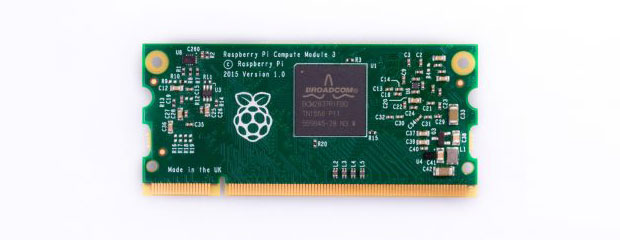
The Raspberry Pi Foundation on Monday launched its long-awaited industrial strength Compute Module 3. The latest version of the low-cost Raspberry Pi computer, it is designed for more robust manufacturing and technical demand uses than prior versions, which target consumer and basic business needs.
The idea behind the new module is to provide a cost-effective way to produce customized products based on the Raspberry Pi 3, noted James Adams, chief operating officer and hardware lead.
The new module offers 10 times the CPU performance and twice the RAM of the original module, which allows innovators working in an entrepreneurial environment capabilities comparable to those of their more established colleagues.
“The thought was to provide the ‘team in the garage’ with easy access to the same technology as the big guys,” Adams wrote in an online post. “The Module takes care of the complexity of routing out the processor pins, the high speed RAM interface and core power supply and allows a simpler carrier board to provide just what is needed in terms of external interfaces and form factor.”
Design Options
The foundation launched two versions of the Compute Module 3. The standard features a BCM2837 processor at up to 1.2GHz with 1 GByte of RAM, the same as Pi3, and 4 Gbytes of on module eMMC flash. It’s priced at US$30.
The second version, Compute Module 3 lite, has the same processor and RAM, but brings the SD card interface to the module pin, which allows users to connect it to an eMMC or SD card of their choosing. It’s priced at $25.
The foundation also released an updated version of its breakout board, the Compute Module IO Board V3, which provides power to the module and much more flexibility. Users can program the module’s flash memory on the non-Lite versions, or use an SD card on the Lite versions to access the processor interfaces more easily, according to Adams.
In addition, the HDMI and USB connectors allow users to boot Raspbian or another OS of their choosing.
Raspberry Pi Foundation partners RS and Premier Farnell are offering full development kits to those who choose to start designing with CM3.
The foundation further announced a price reduction for the original Raspberry Pi model, which now can be had for $25.
Display Market
“The Compute Model 3 brings the upgraded performance from the regular Raspberry Pi model 3 to the industrial model,” noted Kevin Krewell, principal analyst at Tirias Research.
“The compute model is designed specifically for more complex products where the module provides for the computing and the main system board provides the connection,” he told LinuxInsider.
NEC Display Solutions Europe last fall announced plans to collaborate with Raspberry Pi on its Open Modular Intelligence platform.
The Raspberry Pi Compute Model 3 works seamlessly with its professional P and V series large-format displays, the company said.
The new displays also allow for easy connections to IoT for digital signage or presentations, it noted.
“This is primarily a way to add compute power to industrial equipment, like manufacturing robots, advanced sensors and certain types of controls,” observed Rob Enderle, principal analyst at the Enderle Group.
“Companies that want to compete aggressively on price with an updated class of commercial devices will find this part the most attractive,” he told LinuxInsider.
NEC displays are used by seven of every 10 financial companies in London, 16 of every 20 of the top self-service restaurants in the U.S., 30 percent of the digital cinema projectors in Western Europe and 180 airports worldwide.
The new CM3 uses an ARMv7 platform, which runs solidly above 1GHz and has camera and display options that are easy to attach, said Paul Teich, principal analyst at Tirias.
Its half a gigabyte of LPDDR2 memory and 4 GB of eMMC flash memory aren’t much for smartphones and personal computers, he told LinuxInsider, but plenty enough for many classes of IoT devices.
[Source:- technewsworld]

